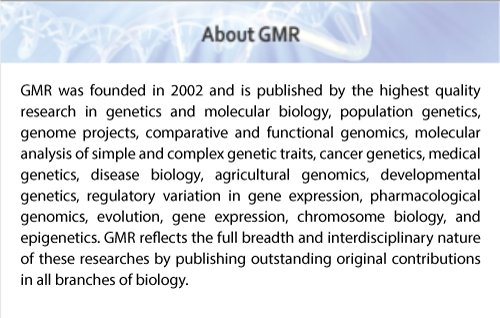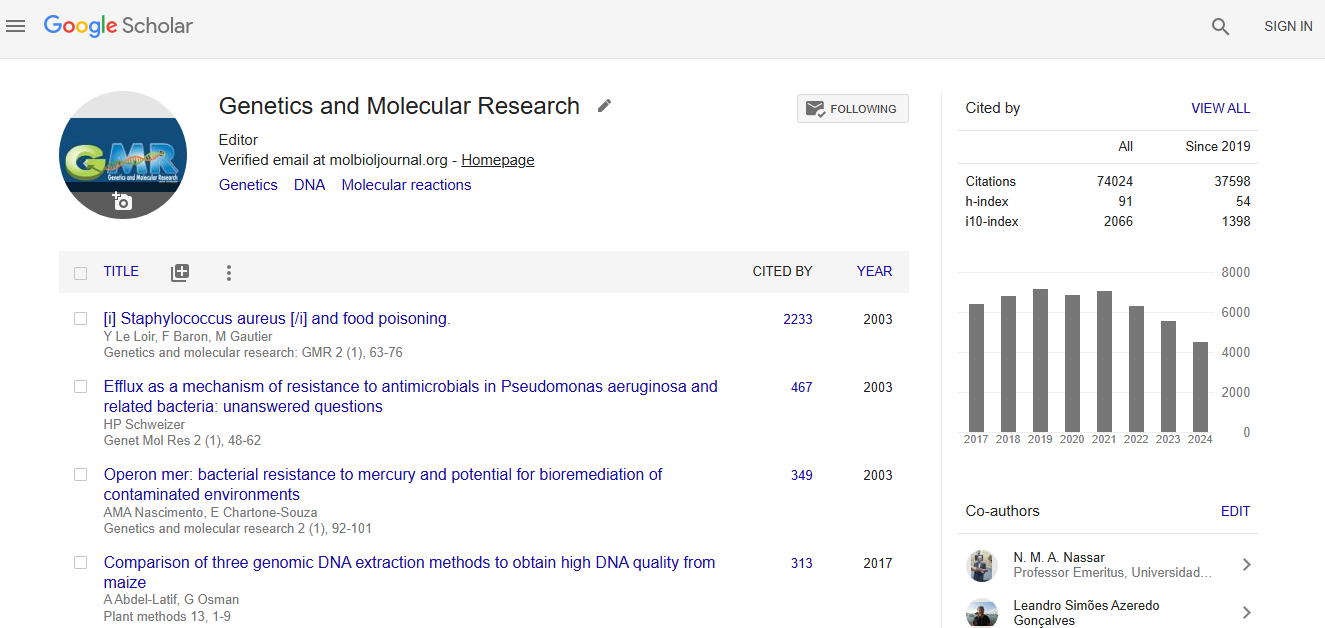Abstract
Karyoevolution of the toadfish Thalassophryne nattereri (Batrachoidiformes: Batrachoididae)
Author(s): G.W.W.F. Costa and W.F. MolinaThe Batrachoididae includes some venomous brackish and marine fish found in the Atlantic, Indian and Pacific oceans. This family is composed of 69 species, distributed among 19 genera. Species of the genus Thalassophryne have been reported along the coast of Rio Grande do Norte (Brazil); T. nattereri has been responsible for a large number of human injuries. Little is known about the cytogenetic features of this family. We made a karyotypic characterization of T. nattereri collected from the estuary of the Apodi/Mossoró River, using conventional Giemsa staining, C-banding and silver nitrate-nucleolar organizer region technique. There was a modal diploid value of 2n = 46 chromosomes (8m + 8sm + 24st + 6a; fundamental number = 86). Single ribosomal sites were detected in the terminal region on short arms of a subtelocentric pair (19th). Heterochromatin segments were preferentially located over centromeric regions in some chromosome pairs. Pericentric inversions and Robertsonian rearrangements seem to have played a major role in karyotype evolution within this genus of toadfish. The Batrachoididae includes some venomous brackish and marine fish found in the Atlantic, Indian and Pacific oceans. This family is composed of 69 species, distributed among 19 genera. Species of the genus Thalassophryne have been reported along the coast of Rio Grande do Norte (Brazil); T. nattereri has been responsible for a large number of human injuries. Little is known about the cytogenetic features of this family. We made a karyotypic characterization of T. nattereri collected from the estuary of the Apodi/Mossoró River, using conventional Giemsa staining, C-banding and silver nitrate-nucleolar organizer region technique. There was a modal diploid value of 2n = 46 chromosomes (8m + 8sm + 24st + 6a; fundamental number = 86). Single ribosomal sites were detected in the terminal region on short arms of a subtelocentric pair (19th). Heterochromatin segments were preferentially located over centromeric regions in some chromosome pairs. Pericentric inversions and Robertsonian rearrangements seem to have played a major role in karyotype evolution within this genus of toadfish.
Impact Factor an Index

Google scholar citation report
Citations : 74024
Genetics and Molecular Research received 74024 citations as per google scholar report
